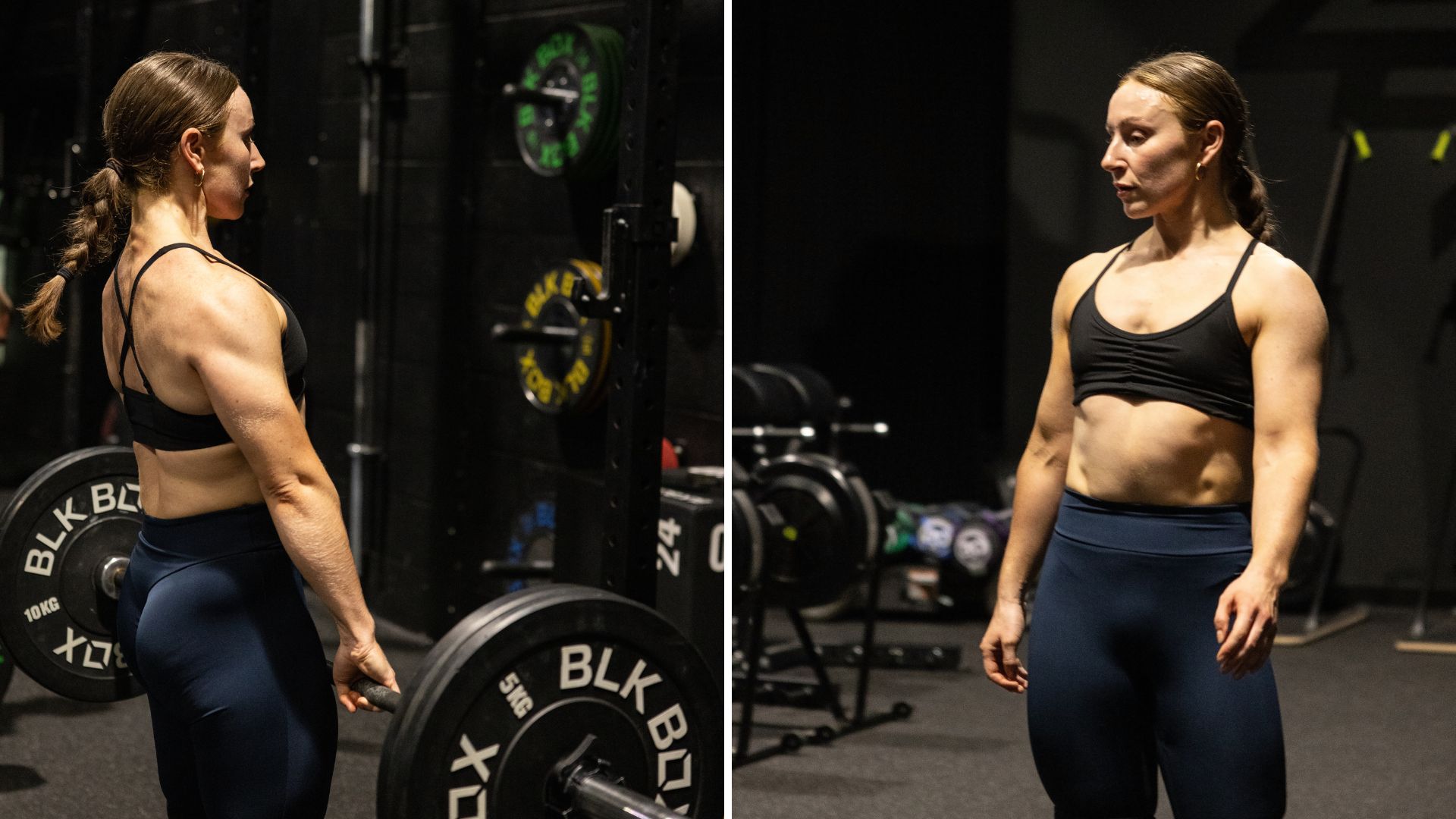I’ve been weightlifting four days a week, for four years – 5 things I’ve learned
From developing a more resilient mindset to having a new found love for mobility


It was back in 2020 during the Lockdowns that I started strength training with a pair of adjustable dumbbells at home in the garden (our garden wall as my weight bench). Then, as soon as we were allowed to hit the gyms again I decided it was time to rejoin and start taking my training a little more seriously.
I was well aware of the benefits of strength training, but – like many women – I suffered from gymtimidation, too scared to approach the weight rack alone. Luckily, a friend held my hand for the first few months and I’ve never looked back since.
Weightlifting has honestly changed my life in so many ways; it’s helped me make new friends (it’s actually where I met my partner), boosted my confidence, changed my body and I always feel 10 times better leaving than when I arrived. These are the five main lessons it's taught me...
1. Building muscle transformed my physique
Before I started weightlifting I’d spend 45 minutes on the exercise bike or treadmill which, not only was incredibly boring and put me off the gym for a good while, but it did nothing for my physique. That’s not to shun cardio. Cardio is very important, but weight training changes your body composition through building muscle, and can help you lose weight, as it burns more calories at rest.
It’s only when I started to strength train and build muscle that my physique changed too. I became leaner and the more muscle I gained, the more my defined my body looked. Women particularly, get worried about becoming ‘bulky’ from lifting weights, but this isn’t true (we don’t have the correct level of hormones for a start). It’s the best form of training if you desire that ‘toned’ look, which is simply building muscle, just no one likes saying that.
A post shared by Bryony Firth-Bernard 🤍 (@bryonyfb)
A photo posted by on
2. Mobility will improve your lifts
Shamefully, I didn’t start doing this until last year. However, it’s so important and athletes that I’ve spoken to, like HYROX Master Trainer Jake Dearden and CrossFit winner, Laura Horvath, will also vouch for this. Incorporating mobility exercises into your warm-up primes your joints and muscles for a workout, as you’re moving them through their full range of motion.
There’s many a times I made a beeline for the squat rack with super tight hips having sat at a desk all day, then I’d get all sad wondering why I couldn’t get into a good squat position. Now my squat depth is the best it's ever been, and it’s all thanks to mobility. You don't have to spend ages doing this, but five to 10 minutes, even daily, will help you move so much more efficiently, during and outside of training.
Get all the latest news, reviews, deals and buying guides on gorgeous tech, home and active products from the T3 experts
3. It builds resilience and discipline
Getting strong and building muscle is a bit like the tortoise from the famous fable, it takes time, patience and perseverance. It’s not an overnight success, and everyone has to start somewhere, usually at the bottom.
I’ll never forget laying on the weight bench for the first time with a measly 2.5 kilo plate either side of the barbell and feeling very embarrassed as a guy to the side of me benched more than my bodyweight. But, over time this gradually built up to two five-kilo plates, then two 10’s and so on. There were good sessions and bad ones, but staying consistent and not letting those bad days get the better of you builds resilience, which can help you through other challenges. It's also a great way to show you that you can achieve something you never thought you could.
4. You can do cardio and still get strong

Lots of people will tell you that ‘cardio kills gains’ and I also fell victim to this belief for a long time, but it’s not true. In fact, a systemic review in Sports Medicine, which looked at 43 studies, concluded that “concurrent aerobic and strength training does not compromise muscle hypertrophy and maximal strength development” when performed at least 3 hours apart.
I try and do a five-kilometre run on the weekends and two short conditioning sessions and my strength hasn’t stalled at all. In fact, I always have a more successful squat and deadlift session when I've done a run, and my recovery time improves massively. To do both, you're best to keep your cardio and strength days separate and to just be mindful that you're re-fuelling accordingly.
5. Recovery is where the magic happens
When you lift weights, and especially when you start noticing changes in your body, it can become almost addictive to want to keep pushing yourself further and further, but this can actually hinder your progress. I fell victim to this, and at one point was (trying) to lift heavy weights five days a week, yet getting frustrated that I was tired all the time and wasn’t seeing any progress. But when I reduced this to four days my performance instantly improved, which led to better results.
While you provide the stimulus for muscle growth in the gym – by lifting heavy weights and causing micro tears in your muscle fibres – it’s outside the gym while you're resting that your muscles repair themselves and grow back bigger and stronger. This also includes re-fuelling with the right foods, such as eating enough protein for muscle repair and carbs for energy.

Bryony’s T3’s official ‘gym-bunny’ and Active Staff Writer, covering all things fitness. She is a certified personal trainer and also a part-time fitness instructor. In her spare time, you will find her in her natural habitat - the gym - where her style of training is a hybrid of bodybuilding and powerlifting. Bryony loves writing about accessible workouts, nutrition and testing innovative fitness products that help you reach your fitness goals and take your training to the next level.